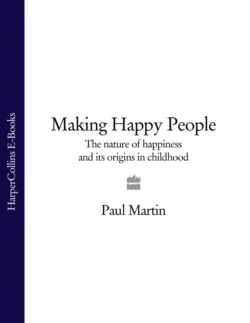Making Happy People: The nature of happiness and its origins in childhood

Paul Martin
Тип: электронная книга
Жанр: Семейная психология
Язык: на английском языке
Стоимость: 389.21 ₽
Статус: В продаже
Издательство: HarperCollins
Дата публикации: 16.04.2024
Отзывы: Пока нет Добавить отзыв
О книге: All parents want their children to be happy – but no parent knows how to guarantee it. Now this groundbreaking book explores the ways in which parents can influence their children’s happiness, providing a positive framework for emotional growth.Happiness is simultaneously the most sought after and the most elusive human property. But it is also poorly understood. Making Happy People breaks new ground in two ways: by offering a scientific perspective on a subject often dominated by philosophers, artists and self-help gurus; and by looking at the origins of happiness in the individual.Essential reading for everyone who wants to be happier, or to make others happy, this remarkable book combines the latest research with indispensable advice to illuminate a little explored subject of large importance.